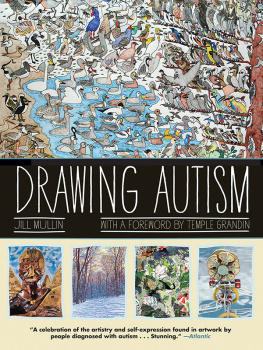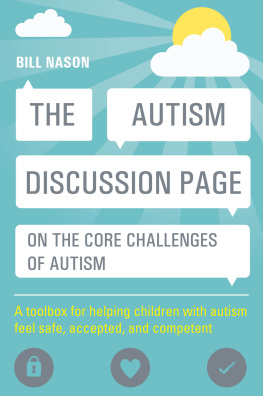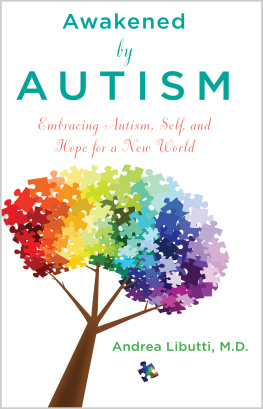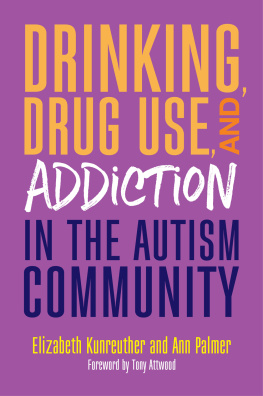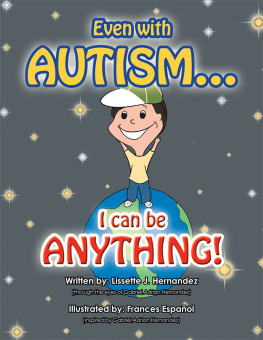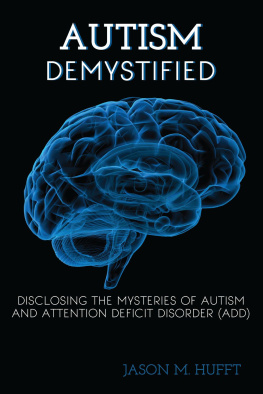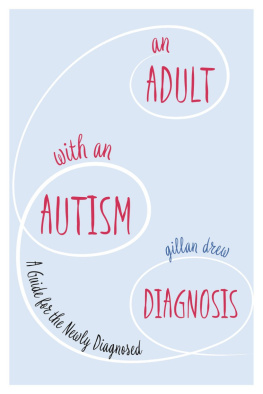
NURTURING THE WAYS IN WHICH WE SEE THE WORLD
by Temple Grandin
When I was a child, my mother nurtured my artistic ability. I was always encouraged to draw many different subjects. As an adult, I used my artistic talent for my business of designing livestock handling facilities. One of the lessons my mother taught me that really helped to develop my skills was to create pictures that other people would want.
In elementary school, I drew many pictures of horses. Individuals on the autism spectrum often become fixated on their favorite things. As a child I would keep drawing the same things over and over. The great motivation of these fixations has been channeled into the creation of all the beautiful art featured in this book.
Talents need to be carefully nurtured and directed. I have heard sad stories of a misguided teacher stamping out a childs interest in art. If a child draws the same cartoon character over and over, one simple way to encourage him or her to draw other subjects is to ask for something that is related to the character. One example would be to draw a house or a car for their favorite character.
Jessica Park, a famous artist with autism, creates beautiful paintings of houses formed by multicolored geometric patterns. Her mother, Clara Claiborne Park, worked with Jessy to direct her artistic talent to create paintings that other people would want. Some of her early favorite paintings were of electric blanket controls and corporate logos. Today many people buy her paintings of houses, but few people would want pictures of electric blanket controls. Her mother worked to direct her talent to create pictures with broader appeal.
Most individuals on the autism spectrum often excel at one thing, while struggling with something else. The skills are often uneven. I have observed that there are three different types of specialized autistic minds.
The first type is the visual thinker like me. My mind works like Google for images. When I design equipment, I can test run it in my mind like a computer-generated virtual reality. When I draw a piece of equipment, I can see the actual object. My weak area is algebra. Algebra makes no sense because there is nothing to visualize. The artwork of visual thinkers is often quite photo-realistic. I have never done anything resembling impressionist art.
Some people who are visual thinkers can do geometry and trigonometry; they possess the second type of mind: the pattern thinker. Instead of creating photo-realistic pictures in their imaginations, they see patterns and relationships between numbers. It is a more abstract form of visual thinking. I have talked to a great number of these individuals. Some of them have visual processing problems that interfere with their ability to think in photo-realistic pictures. When they are tired, they report that their visual perception can become distorted. It is similar to the distortions that people with migraines experience. Reading is difficult because the print jiggles on the page.
Such visual processing problems in the brain may change their art in beautiful ways. If they do visual art, it may be more abstract and impressionistic, as opposed to photo-realistic. Emily L. Williams, in her many books and writings, has explained how she is not a visual thinkershe is an auditory thinker. When I first looked at her work I had expected to see nothing but abstract and impressionistic art. For somebody who claims not to be a visual thinker, she has created a great range of paintings and sculptures. Some of her paintings are very impressionistic and others are not. At the same time, I looked up Claude Monet and saw some of the same soft images with a dream-like quality. Problems with visual processing will vary depending on how tired the person is. Both Emily L. Williams and Monet have a mixture of very abstract impressionist art and more photo-realistic art. Perhaps this is due to changes in their visual perception. Visual processing problems tend to improve or get worse depending on fatigue or sensory overstimulation. Some people have such severe visual processing problems that they cannot draw at all. Out of forty students in my design class, I find at least one in every class who absolutely cannot draw. Many of these students also have difficulty driving at night, reading is hard, and they all hate the flicker of fluorescent lights.
The third type of specialized mind on the spectrum is the word specialist mind. These people are often really good with words, and they usually are not interested in art.
No matter the type of mind, ability has to be nurtured. It took me three years to learn how to design cattle handling facilities. It was not done overnight. Parents, teachers, doctors, and everybody who works with individuals on the spectrum need to help these individuals develop their abilities.
I hope you enjoy the artwork in this book.




_____________
Artwork in the Foreword:
JESSICA PARK: THE POTALA PALACE IN TIBET; 16 X 20 INCHES; 1990. COURTESY OF PURE VISION ARTS.
TEMPLE GRANDIN: DIPPING VAT SYSTEM, SIDE VIEW; 1978. COURTESY OF TEMPLE GRANDIN.
TEMPLE GRANDIN: DIPPING VAT SYSTEM, TOP VIEW; 1978. COURTESY OF TEMPLE GRANDIN.
TEMPLE GRANDIN: DIPPING VAT SYSTEM; 1978. COURTESY OF TEMPLE GRANDIN.
AS SEEN THROUGH THE AUTISM SPECTRUM
BY JILL MULLIN
Autism spectrum disorder (ASD) is a developmental disability associated with social interaction, communication impairments, and rigid and/or repetitive behaviors. An individual diagnosed on the autism spectrum can experience a variety of symptoms, all varying in severity; hence the term spectrum in the disabilitys title. An individual can be diagnosed with Pervasive Developmental Disorder (NOS) [Not Otherwise Specified], Autistic Disorder, or be diagnosed with Aspergers Disorder, all of which fall on the autism spectrum. As of 2012, according to the Center for Disease Control, 1 in 88 children are diagnosed with ASD, which affects individuals from all socioeconomic, racial, and ethnic groups; boys are approximately five times more likely than girls to be diagnosed with the disorder.
Because of the increase in diagnosis over recent years, ASD has experienced increased media attention. Films, TV shows, books, magazines, and newspaper articles have examined the disability in order to increase autism awareness, explore current research and epidemiology, and to examine daily living of individuals affected by the disorder. Because ASD is a spectrum disorder, disabilities as well as abilities and talents can vary from individual to individual. Commonly in the media, individuals with autism have been shown to have great talents in certain areas such as science and math. The intention of this book is to display another area where individuals with autism can have great abilities. Fostering and nurturing abilities despite a diagnosis can help individuals with ASD discover their talents.
Four years ago, when the first edition of Drawing Autism was released, I was not sure who the audience would be. Would it be individuals with autism? Their families? Artists? As it turns out, the book has universal appeal. I received feedback from people all over the world from various professional and personal backgrounds. There were comments and interest from galleries and museums, cultural institutions, social service providers, personal blogs, and the mainstream media. It was extremely exciting and, honestly, quite unexpected.
Next page
